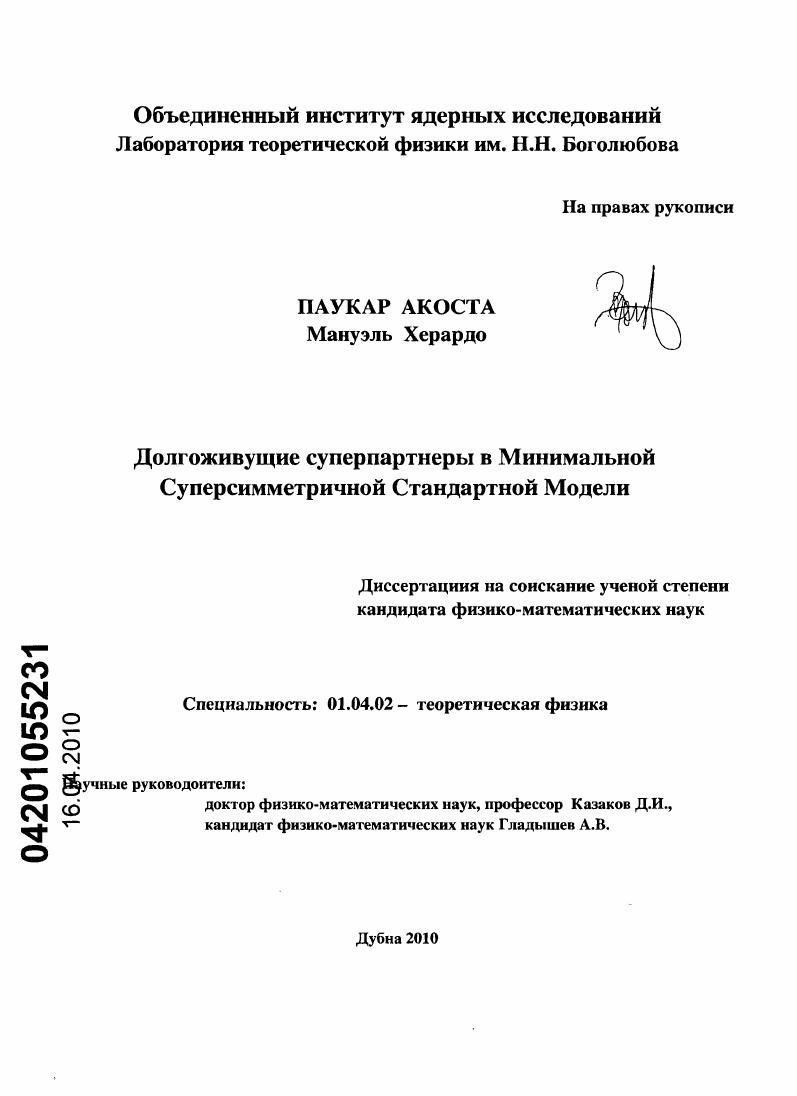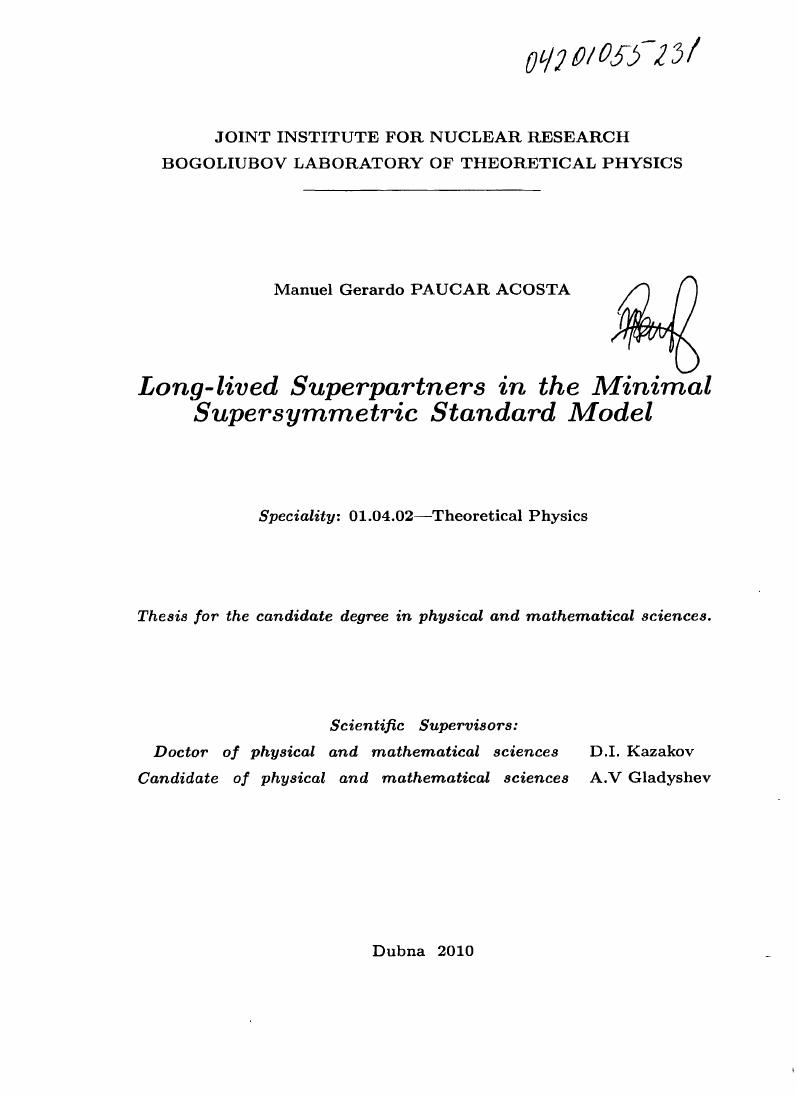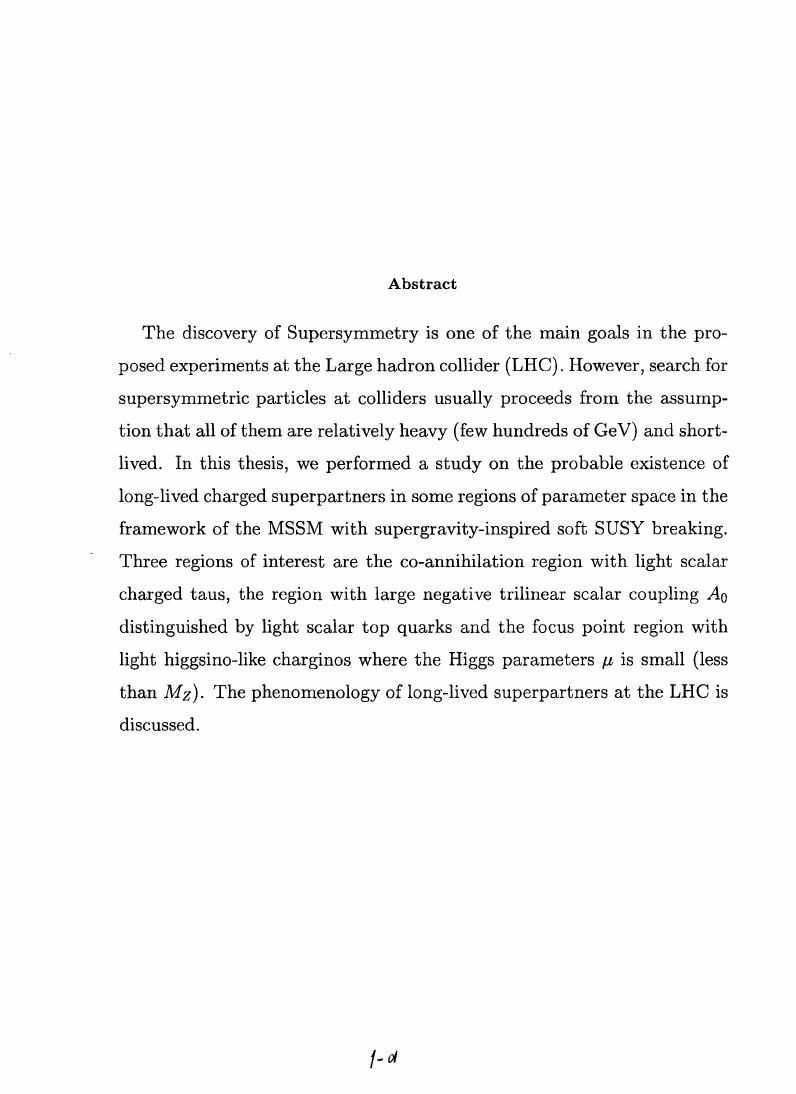Долгоживущие суперпартнеры в минимальной суперсимметричной стандартной модели

- Автор:
Мануэль Херардо Паукар Акоста
- Шифр специальности:
01.04.02
- Научная степень:
Кандидатская
- Год защиты:
2010
- Место защиты:
Дубна
- Количество страниц:
106 с. : ил.
Стоимость:
700 р.250 руб.
до окончания действия скидки
00
00
00
00
+
Наш сайт выгодно отличается тем что при покупке, кроме PDF версии Вы в подарок получаете работу преобразованную в WORD - документ и это предоставляет качественно другие возможности при работе с документом
Страницы оглавления работы


Рекомендуемые диссертации данного раздела
| Название работы | Автор | Дата защиты |
|---|---|---|
| Низкоэнергетические свойства адронов в релятивистской кварковой модели | Галкин, Владимир Олегович | 2006 |
| Влияние макроскопических включений на оптические свойства кристаллов в экситонной области спектра | Крюченко, Юрий Владимирович | 1984 |
| Электронная импульсная спектроскопия легких атомов и молекул в электромагнитном поле | Булычев, Андрей Андреевич | 2015 |